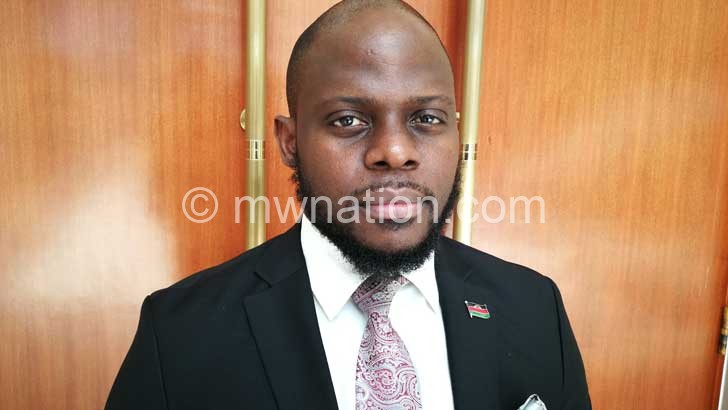Security officers houses project budget up K187bn
The security officers’ housing project is trapped in a web of chaos as its estimated cost has jumped by K187 billion following construction materials price rise, Nation on Sunday has learnt.
With Treasury struggling to raise enough resources for the project, which seeks to construct 10 000 houses, Ministry of Lands authorities have warned that at this pace completion may take 100 years.
This is according to the 2022/23 Public Sector Investment Programme (PSIP) performance report in which government ministries, departments and agencies issue updates on progress made in various projects.
“The primary policy issue in this project is low funding over the past three years of the project, delaying the progress of the project,” the report reads in part.
The project was originally set for completion by June 2020 at a cost of K620 billion but now the estimated budget is nearing K1 trillion.
The report reads in part: “The annual budget allocation for the project should be revised to align it to the TEC [Total Estimated Cost] of the project.

“With the rate at which prices of construction materials are escalating, the K620 billion TEC should also be revised to K807 billion.”
The project is expected to benefit the Malawi Defence Force, the Malawi Police Service, the Malawi Prison Service and the Department of Immigration.
Most of these officers live in tiny dilapidated and dirty instutitional houses that have lived beyond their lifespan while others rent miles away from their duty stations.
Government hyped the project as a game changer as it would motivate security officers. However, as things stand, it all seems a far-fetched dream.
So far, only 35 houses have been completed ahead of the 2025 revised deadline, according to the progress report compiled by the Ministry of Finance and Economic Affairs.
The project was expected to be done in segments with 1 028 housing units to be built in phase one, 4 300 in phase two and 4 672 in the third one.
“[At least] 943 housing units in phase 1 are still under construction at different completion rates, with 196 houses at 90% on average and 797 at an average of 40% completion. In addition, 8 972 housing units, some in phase 2 and 3, are yet to commence,” the report further reads.
Other than funding, the implementing ministry also attributes the delay to land encroachment and inadequate implementation capacity “due to overwhelming commitment from the responsible officers in the ministry as well as the Department of Buildings.”
The ministry concedes that it is not possible for the project to be complemented within the prescribed period.
“An initial planned completion date in 2025 has to be revised if the project is to be completed effectively…The current rate of funding implies the project can take up to 100 years before completion,” the report reads.
Meanwhile, the Minister of Finance Sosten Gwengwe said he could not comment on how government intends to scale up funding towards the project.
He referred this paper to Ministry of Finance spokesperson Taurai Banda who has not yet responded to our questionnaire.
Meanwhile, a security expert Sheriff Kaisi has said it is disappointing that the project has stagnated. He, however, observed that it was down to government not treating it as a priority.
“It is about priorities. It just shows that we are not serious with matters of security in our country. Go to Limbe Police Station and C Company in Lilongwe and see how poor the security personnel houses are.
“They were constructed before we attained our independence in the 1960s. They are very small houses that haven’t been rehabilitated for years. It’s the same scenario with Moyale and Kamuzu Barracks,” he said.
Kaisi, a former Malawi Defence Force officer, further explained that the way a country treats its security officers has an impact on direct foreign investment and tourism.
“We are playing with a very important arm which brings in direct foreign investment funding and even tourists. There are no tourists who would risk their lives to visit a country where they feel they are not safe,” the political science lecturer at Blantyre International University, further said.
The project’s financing was expected to be the government, Opec Fund for International Development and Arab Bank for Economic Development in Africa, the report shows.
However, it is only locally generated funds that are being allocated into it. So far, the Treasury has pumped in K37 billion, which represents six percent of the K620 billion budget.
In a response to our questionnaire, Mzuzu University economics lecturer Christopher Mbukwa said he was not surprised with the dismal performance.
“The main challenge with many locally financed projects is the rate of disbursements. Due to the country’s limited fiscal space, locally financed projects are the first culprit.
“Not only do locally financed projects experience late disbursements but also inadequate funds flow,” he said.
Mbukwa expressed the need to manage the weight of expectation placed on the project.
He explained: “The project is ‘Construction of 10 000 Housing Units for MDF, Police, Prisons and Immigration’ but the question is what is the timeframe? So, for the 2023-24 financial year, what was the target, and how many have been achieved?
“Perhaps the reporting should also be moderated to annual targets rather than the attention catching headline of 10 000 houses which in my opinion without external injection involved, it may take several years to hit 10 000 houses due to the country’s tight purse.”
The economist further called for deliberate efforts to improve the resource flow to locally financed projects.
“My quick analysis is that the outturn expenditure in most locally financed projects has been lower than the planned expenditure.
“This is because in an event that the country is unable to raise enough revenue, the capital budget is the first culprit that suffers budgetary cuts as opposed to recurrent expenditure,” he said





